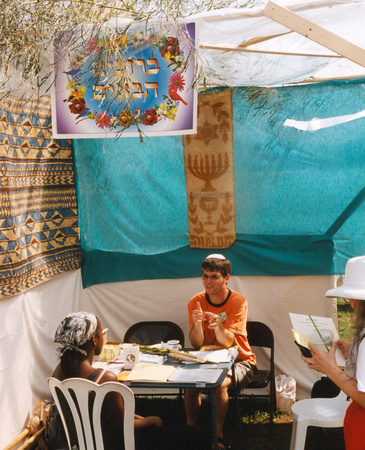0742: Jewish Sukkah
You will dwell in booths for seven days; all natives of Israel shall dwell in booths. -Leviticus 23:42
In honor of the Sukkot holiday’s historical significance, Jews are commanded to dwell in temporary shelters, as our ancestors did in the wilderness. The temporary shelter is referred to as a sukkah (which is the singular form of the plural word "sukkot"). The commandment to "dwell" in a sukkah can be fulfilled by simply eating all of one's meals there; however, if the weather, climate, and one's health permit, one should spend as much time in the sukkah as possible, including sleeping in it.
A sukkah must have at least two and a half walls covered with a material that will not blow away in the wind. The "walls" of the sukkah do not have to be solid; canvas covering tied or nailed down is acceptable and quite common in the United States. A sukkah may be any size, so long as it is large enough for you to fulfill the commandment of dwelling in it. The roof of the sukkah must be made of material referred to as sekhakh (literally, covering). To fulfill the commandment, sekhakh must be something that grew from the ground and was cut off, such as tree branches, corn stalks, bamboo reeds, sticks, or two-by-fours. Sekhakh must be left loose, not tied together or tied down. Sekhakh must be placed sparsely enough that rain can get in, and preferably sparsely enough that the stars can be seen, but not so sparsely that more than ten inches is open at any point or that there is more light than shade. It is common practice, and highly commendable, to decorate the sukkah. In the northeastern United States, Jews commonly hang dried squash and corn in the sukkah to decorate it, because these vegetables are readily available at that time for the American holidays of Halloween and Thanksgiving. Many families hang artwork drawn by the children on the walls.


